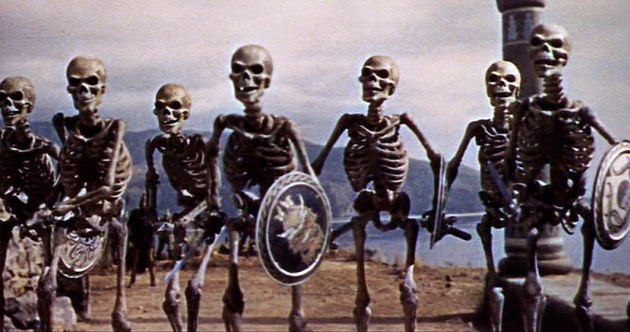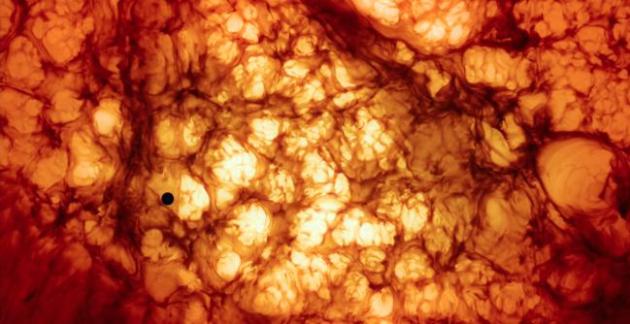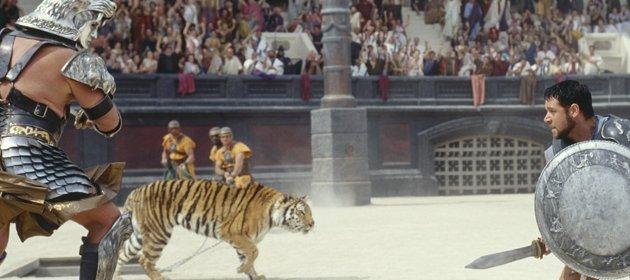50 Best Movie Special Effects
Amaze your eyeballs with the impossible
Death Becomes Her (1992)

The Effect: Rivals Madeline Ashton (Meryl Streep) and Helen Sharp (Goldie Hawn) take a youth potion that renders both immortal.
Why So Impressive: A lesson in the flexibility of CGI, as Terminator 2 ’s FX breakthrough gets played by Robert Zemeckis for sick body-horror laughs, including decapitations and a bullet through the stomach.
Geek Fact: Meryl Streep hated working on such an FX-heavy project, confessing: “My first, my last, my only. I think it’s tedious.”
Independence Day (1996)

The Effect: Alien ship. White House. Something’s gotta give.
Why So Impressive: Up until this, most films kept their biggest special effects under wraps. Roland Emmerich’s film made its destructive money shot the cornerstone of the whole marketing campaign.
Geek Fact: Somewhat cheekily, the film was shown to Bill Clinton...inside the White House.
Transformers (2007)

The Effect: You know. Kirr-karr-korr-kurr-krrr.
Why So Impressive: An already classic effect from the 1980s’ animated series, rendered as bombastic as Michael Bay wanted with a flurry of mechanical movement.
Geek Fact: Optimus Prime has 10,108 parts.
Jason And The Argonauts (1963)

The Effect: Jason (Todd Armstrong) and his crew are besieged by skeleton warriors.
Why So Impressive: Ray Harryhausen made his name with this film’s stop-motion creatures – a nice reward considering it took four months to animate four minutes.
Geek Fact: Harryhausen added previous creature designs to the skeletons’ shields as an in-joke.
Forrest Gump (1994)

The Effect: Forrest Gump (Tom Hanks) meets various baby-boomer era celebrities, including John F. Kennedy and John Lennon.
Why So Impressive: Robert Zemeckis used CGI to make Hanks’ presence in archive footage as authentic as possible, altering mouth movements and compositing the actor so that Forrest could shake celebs’ hands.
Geek Fact: Orson Welles and Woody Allen experimented with faking archive footage using pre-CGI methods in Citizen Kane and Zelig , respectively.
Superman Returns (2006)

The Effect: During a bank robbery, Superman (Brandon Routh) is shot in the eye.
Why So Impressive: The bullet bounces off, providing the screen’s finest demonstration of why they call Supes the Man of Steel.
Geek Fact: According to FX supervisor Kevin Baillie, the hardest part of the shot to achieve was the muzzle flash.
Bringing all the latest movie news, features, and reviews to your inbox
The Tree Of Life (2011)

The Effect: The universe is formed, life begins on Earth and the dinosaurs roam wild.
Why So Impressive: Because, in the age of CGI, Terrence Malick hired FX legend Douglas Trumbull to do things old-school - and it still looks mind-boggling.
Geek Fact: According to Trumbull, the list of items used to create the effects included chemicals, paint, fluorescent dyes, smoke, liquids and carbon dioxide.
Metropolis (1926)

The Effect: The titular elaborate cityscape, featuring art deco high-rises towering over labyrinthine slums.
Why So Impressive: FX pioneer Eugen Schüfftan built elaborate miniature sets, and then used mirrors to create the effect that actors were walking around them.
Geek Fact: Adjusted for inflation, the film cost approximately $200 million to make, making it one of the most expensive productions ever mounted.
Scanners (1980)

The Effect: A demonstration on the telepathic abilities of Scanners goes wrong when the company Scanner (Louis Del Grande) accidentally picks a much stronger telepath (Michael Ironside) for a demonstration.
Why So Impressive: David Cronenberg sealed his reputation for body horror by exploding a man’s head with realistic-looking gore and ballistic precision.
Geek Fact: How to do it? Fake head full of offal. Shotgun blast to the back of the dummy. Wear waterproofs.
Gladiator (2000)

The Effect: Maximus Decimus Meridius (Russell Crowe) fights tigers before Rome’s baying Colosseum crowd.
Why So Impressive: A landmark in using SFX for period drama, as digital dummies bulk out the crowd and the tigers are safely filmed well away from Crowe. For the tigers' protection, obviously.
Geek Fact: The tragic death of Oliver Reed mid-shoot meant that Reed’s face had to be mapped onto a body double for his unfilmed scenes.


